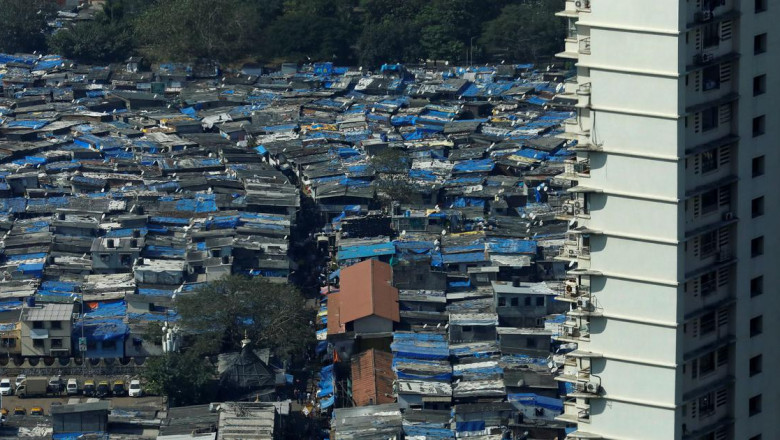views
The redevelopment of urban slums is therefore not just an infrastructure issue but a social and economic priority. Redevelopment promises to transform lives by improving housing, enhancing living standards, and integrating marginalized communities into the urban mainstream. However, the process is fraught with challenges ranging from legal disputes to policy shortcomings, land acquisition hurdles, and financial constraints.
Understanding Slum Redevelopment
Slum redevelopment typically involves:
-
Relocating slum dwellers into formal housing structures (either on-site or off-site).
-
Clearing encroachments to utilize the land for planned development.
-
Public-private partnerships (PPPs) or government-led schemes to fund and manage the projects.
In India, major urban centers like Mumbai, Delhi, and Chennai are focusing increasingly on slum redevelopment as part of their smart city and urban rejuvenation goals.
Key Government Initiatives
Several schemes have been launched to address slum redevelopment:
1. PMAY (Pradhan Mantri Awas Yojana) – Urban
This flagship housing scheme aims to provide “Housing for All” by 2022 through different models, including in-situ slum redevelopment using land as a resource.
2. Rajiv Awas Yojana (RAY)
Though phased out, RAY aimed to make cities slum-free by encouraging states to adopt inclusive development strategies.
3. State-Specific Policies
Cities like Mumbai have their own models, such as the Slum Rehabilitation Authority (SRA), where developers provide free housing to slum dwellers in return for development rights on part of the land.
Major Challenges in Slum Redevelopment
While the vision of transforming slums into livable spaces is commendable, execution on the ground remains highly complex.
1. Legal and Tenure-Related Issues
Many slum residents lack legal documentation to prove their residence, making it hard to establish eligibility for redevelopment schemes. In some cases, multiple claimants to the same plot add legal entanglements that stall projects indefinitely.
2. Land Acquisition and Space Constraints
In dense urban areas, especially in Mumbai or Bengaluru, finding vacant or alternative land to relocate slum dwellers is almost impossible. In-situ redevelopment, while ideal, may not always be structurally or financially feasible.
3. Resistance from Residents
There is often mistrust among slum residents toward developers and authorities. Many fear displacement, inadequate compensation, or loss of livelihood due to relocation, especially when moved far from their workplaces.
4. Funding and Financial Viability
Slum redevelopment projects are low-margin ventures for private developers unless backed by lucrative land deals or FAR (Floor Area Ratio) incentives. In cities where real estate returns are already shrinking, there is limited private sector appetite.
5. Infrastructure Overload
Even after redevelopment, issues persist if surrounding urban infrastructure (roads, drainage, transport) isn't upgraded. Poor planning can lead to the vertical slums problem, where new buildings replicate the same social and economic issues.
6. Bureaucratic Hurdles and Delays
Redevelopment projects often suffer from red tape, delays in clearances, and shifting policy frameworks. Lack of interdepartmental coordination between urban development, housing, and local governance agencies further complicates implementation.
Success Stories and Learnings
Despite these challenges, some cities have showcased successful models of inclusive slum redevelopment:
-
Mumbai’s Dharavi Redevelopment Plan, although slow-moving, is one of the largest urban renewal initiatives in Asia.
-
Ahmedabad’s Sabarmati Riverfront Project successfully relocated thousands of informal settlers while improving public infrastructure and river ecology.
-
Tamil Nadu’s Slum Clearance Board has adopted high-rise public housing in Chennai, integrating schools, clinics, and parks to improve quality of life.
Key lessons from these projects include the need for:
-
Transparent engagement with community members
-
Phased relocation strategies
-
Strong legal frameworks and incentives
-
Integration of livelihoods and support services
The Way Forward
For slum redevelopment to be truly transformative in India, it must be:
-
People-centric rather than profit-driven
-
Sustainable, both socially and environmentally
-
Digitally integrated for transparency, tracking, and data-driven decision-making
Technology can play a significant role here. Digital mapping of slums, AI-driven project planning, and mobile platforms for resident engagement can streamline the process, reduce corruption, and build trust.
Additionally, partnerships between government, private sector, and civil society are crucial. Redevelopment is not just about buildings—it’s about creating inclusive neighborhoods that offer dignity, opportunity, and stability.
Conclusion
Slum redevelopment holds immense potential to reshape India's urban future. By providing dignified living spaces to millions, we address not just a housing crisis, but also public health, urban equity, and economic productivity.
However, success hinges on collaboration, innovation, and community trust. Policymakers must prioritize inclusive strategies, developers must focus on long-term social value, and communities must be empowered to participate in shaping their future.
At HexaHome, we are committed to responsible and inclusive urban growth. Through strategic partnerships and ethical development models, we aim to create housing solutions that uplift communities while respecting cultural and social ties.
Supported by Hexadecimal Software, we use cutting-edge technology—like geospatial analysis, digital project monitoring, and mobile engagement tools—to ensure transparency, accountability, and efficiency in redevelopment initiatives.
Together, HexaHome and Hexadecimal Software are working toward a future where every Indian has access to safe, dignified, and sustainable housing—one neighborhood at a time.














Comments
0 comment